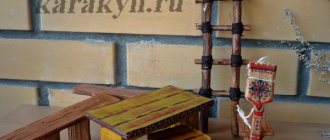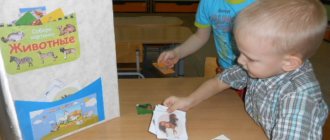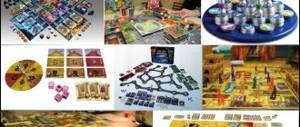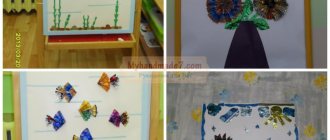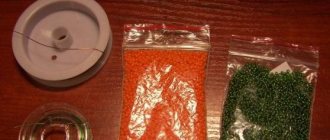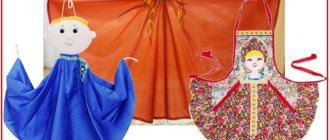Geography for children! Travel to Antarctica! 3+
A few weeks ago, my kids and I explored the North Pole, it was an interesting, bright trip, and I immediately decided that I would definitely take my young friends to the South Pole.
But I had no idea what we would do there. Yes, there are penguins there, yes, this is the coldest place on the planet, but can you really get far on such a stingy base? But as soon as I immersed myself in the topic of Antarctica, started reading articles about this place, all the questions about what to do at the South Pole disappeared by themselves. This is simply an amazing place, very multifaceted, original and absolutely delightful for anyone who seeks knowledge and adventure. And if you are one of those, then read on, I will tell you everything I know and show you how interesting it is to present new information to children.
1. Presentation and map.
Intelligence!
It is better to start all geographical studies by looking at the map, looking for the place where we are now and the place where we are going. Just as quickly, it seems to me, it is necessary to introduce children to the main features of the subject being studied, and it is best to do this through presentation. I prepared a dozen photographs on the topic of Antarctica, which eloquently showed everything that I was going to tell the guys soon. If anyone needs this collection, then leave your email in the comments, I will send it to you.
2. Day-Night!
Activity!
Just like at the North Pole, at the South Pole there is day for half the year and night for half the year. Everyone liked the active running game from the last lesson, so I used it this time too. At the word “day” everyone runs in different directions, and at the word “night” everyone gathers in one place. It’s also ideal to turn the light on and off.
Everyone liked the active running game from the last lesson, so I used it this time too. At the word “day” everyone runs in different directions, and at the word “night” everyone gathers in one place. It’s also ideal to turn the light on and off.
3. Summer-Winter!
Activity, sorting!
At both the North and South Poles there are only two seasons: summer and winter. Antarctica is the coldest place on Earth, although it seems to be in the south. The lowest temperature that was recorded by scientists is -89 degrees Celsius, brrrrr...
Antarctica is the coldest place on Earth, although it seems to be in the south. The lowest temperature that was recorded by scientists is -89 degrees Celsius, brrrrr...
In summer, the temperature reaches -15 -25 degrees, which is also somewhat cool. But it is thanks to the eternal frost that the massive glaciers, which are the largest reservoirs of drinking water in the world, do not melt.
But it is thanks to the eternal frost that the massive glaciers, which are the largest reservoirs of drinking water in the world, do not melt.
In order to touch on this topic with the children at least a little, I prepared a sorting game. In the bag I had summer and winter cards (I found them on Google by searching for winter bingo and summer bingo, there are many different ones there). The children's task was to understand which season, for example, a mug of cocoa, a swimsuit or a figure skater belonged to, and hang the card at the appropriate level on a clothespin.
4. Penguins!
Creation!
The South and North Poles are similar in many ways, including the fact that at both you can see the aurora - sparkling patterns in the black night sky. I suggested that the children play with this fact, as well as the calling card of Antarctica - penguins. The first thing we did was wet the paper with clean water.
Next, using watercolors, we painted the entire sheet in our favorite colors, trying to emit highlights of radiance.
We tried to paint without sparing water. And the wet drawing was generously sprinkled with salt.
If you do not overdo it with water, then after shaking off the excess salt, you can immediately begin painting the templates. I cut out little penguins, and the kids painted over the empty space with black gouache.
Well, and the last nuance - white bellies, here - the Antarctic picture is ready. Many creators after finishing added more salt to make it snowy
Many creators after finishing added more salt to make it snowy
Here's another idea for an Antarctic craft. Kamilkina homework 
5. Penguin eggs!
Activity!
It was impossible to part with penguins so easily, therefore, to reinforce the theme a little that they are birds, although not flying, but also lay eggs, thus breeding offspring. They live in large families and choose a mate for life. And only males sit on the eggs. Well, the kids and I played saving testicles. I drew marks on a long piece of wallpaper. The task was to follow the drawings one after the other (sometimes on one leg, sometimes jumping over them) and carry the penguin egg (kinder) on a spoon in your teeth to your destination. We had a lot of fun!
They live in large families and choose a mate for life. And only males sit on the eggs. Well, the kids and I played saving testicles. I drew marks on a long piece of wallpaper. The task was to follow the drawings one after the other (sometimes on one leg, sometimes jumping over them) and carry the penguin egg (kinder) on a spoon in your teeth to your destination. We had a lot of fun!
6. Scientists!
Fine motor skills, sensory sensations!
Antarctica, unlike the Arctic, is a continent, a large part of the once united land of Gondwana. This continent is the only one that does not belong to anyone and on which people do not live. The only people who spend any time in this harsh climate are scientists who come to the South Pole in search of new knowledge, including about the fertile land rich in plants and animals that Antarctica was before Gondwanaland broke up . The most common way to study is to cut down ice cylinders, the study of which can lead to interesting discoveries or unexpected findings.
My kids also looked for secrets in the ice icicles that were made from silicone IKEA molds. In the middle of each there was an unusual pebble, for this I froze the ice in two stages. The young scientists defrosted their mini-cylinders using warm water, salt, syringes and spoons. And they were very proud of their finds 
7. Meteorites!
Fine motor skills!
Antarctica is the leader in meteorite finds! And this is not surprising, because it is always easier to notice black on white than, for example, on green or brown. Scientists are very actively studying all findings. So my young researchers took it upon themselves to deliver samples to the research center. I prepared two boxes with material for them: one contains dry snow made from semolina and salt, and the second contains their favorite mixture of starch and sunflower oil. Each box contains a bunch of meteorite pebbles; you can’t touch them with your hands, you need to use tools. For a dry mixture - sifting strainers from a fixed price for tea, and for a thick mixture - tongs, also from a fixed price.
And this is not surprising, because it is always easier to notice black on white than, for example, on green or brown. Scientists are very actively studying all findings. So my young researchers took it upon themselves to deliver samples to the research center. I prepared two boxes with material for them: one contains dry snow made from semolina and salt, and the second contains their favorite mixture of starch and sunflower oil. Each box contains a bunch of meteorite pebbles; you can’t touch them with your hands, you need to use tools. For a dry mixture - sifting strainers from a fixed price for tea, and for a thick mixture - tongs, also from a fixed price.
And this is our research station - a box with cells, it was possible to fasten several containers for eggs, but I found a ready-made design made from chocolate bunnies 
8. Volcanoes.
Experiments!
Antarctica, despite the frosts, is also known for its active volcanoes. Erebus is the largest of them. And that’s exactly what I recreated for the kids using wet soda pressed tightly into a plastic cup. We caused an eruption of watercolor-tinted apple cider vinegar, first using pipettes, and then scooping it up with spoons. And, of course, this was the most spectacular part of our adventure.
Erebus is the largest of them. And that’s exactly what I recreated for the kids using wet soda pressed tightly into a plastic cup. We caused an eruption of watercolor-tinted apple cider vinegar, first using pipettes, and then scooping it up with spoons. And, of course, this was the most spectacular part of our adventure.
9. Dry valleys and astronauts.
Activity!
There are amazing places at the South Pole - dry valleys, where, according to scientists, there has been no precipitation for more than 2 million years. Animals cannot survive there; there is bare land and frozen salt lakes. This is the largest and driest desert in the world, even the Sahara is far from it. The unusual climate of this place attracts astronauts here, because it is partly similar to the climate of Mars, and it is here that new NASA models are periodically tested. We played with this information with the children using balloons on which they drew their astronauts. The task was to prevent the balls from falling to the floor for as long as possible!
10. Aurora!
Impression!
Well, the last thing my little explorers and I did was create our own Southern Lights using sparklers in the dark! There was, of course, a lot of squeaking, screaming and delight 
Our adventure was over, but the gaming evening continued. The children could not part with Antarctica and once they felt like scientists they no longer wanted to part with this role, so they played with snow boxes for a long time, mixed their composition, added them to soda volcanoes... And most of the children also asked to take the resulting chemical compositions to themselves home, and we wrapped them pieces of the South Pole in food boxes :-)))
What a bright adventure trip we had! I will be very glad if our script is useful to you too! We wish you bright games and unforgettable impressions!
Climate of Antarctica
The climatic conditions of the southernmost continent are generally harsh and cold. However, the annual climatic regime of the continent's interior regions differs from the climatic conditions of the coasts. Areas of the mainland remote from the coast are influenced by a sharply continental climate.
The air temperature in winter can drop to –90°C, and in summer it can rise to -15°C. In spring and autumn, air temperatures range from -30°C to -40°C. The influence of oceanic cyclones on the climate of the interior of Antarctica is minimal. Air humidity is very low. Precipitation falls in the form of ice dust in the amount of 18 mm per year.
The Antarctic Peninsula on the world map extends beyond the southern polar region, so the climate here is much warmer than in the rest of Antarctica. In summer, the air temperature is always above 0°C, in winter - up to -30°C, in autumn and spring - from -10°C to -15°C. Thaws with air temperatures rising to positive levels are possible throughout the year.
The climate of the Antarctic Peninsula is greatly influenced by the relatively warm waters of the Southern Ocean; precipitation in this area falls about 1000 mm per year in the form of snow, rain and fog.
Often in the area of the Antarctic Peninsula there is a collision of warm air masses formed over the ocean with dry and cold continental air masses, which causes hurricane winds in the region.
The rest of the Antarctic coast lies above the Antarctic Circle, so the climate is colder. In winter, the air temperature drops to -35°C, in the summer season it rises to +4°C. In the spring and autumn seasons, the average air temperature ranges from -15°C to -20°C. Precipitation amount is 700 mm per year.
Antarctic oases are small valleys protected from cold winds by mountains. In winter, the air temperature in such areas is several degrees higher than in the surrounding areas. In summer, the air often warms up to +20°C and above.
Climate map of Antarctica:
| Mainland region | Average temperatures in winter | Average temperatures in summer |
| Inland continental part | -70°С | -25°С |
| Antarctic Peninsula | -20°С | +2°С |
| Coast | -25°С | -4°С |
Geographical features of Antarctica
Antarctica is washed by 3 oceans: the Pacific Ocean, the Atlantic Ocean and the Indian Ocean.
The following Antarctic seas belong to the Pacific Ocean:
- Ross Sea;
- Amundsen Sea;
- Bellingshausen Sea.
The Weddell Sea belongs to the Antarctic part of the Atlantic Ocean. The waters of the World Ocean surrounding the entire Antarctic zone are commonly called the Southern Ocean. The Antarctic continent is 99.7% covered by glaciers, with only the Transantarctic Mountains rising above the glaciers, and the peninsula to the west is ice-free during the summer months.
About 1/3 of the continent lies below sea level. The western part is a group of islands united by a glacier. Beneath the glaciers of the eastern and central parts lies the mainland of Antarctica.
Located on the Antarctic Peninsula, the mountain range that reaches the center of the continent is an extension of the South American Andes. The average height of this mountain range is 4 km, the highest point is Mount Vinson (5.14 km). The peninsula is also home to the lowest point in Antarctica, the Bentley Deep (2,555 km).
The eastern part of the mainland is a platform with several plateaus and mountain ranges ranging in height from 3 km to 4 km.
There are several active volcanoes on the continent, the largest of which is Erebus (3,794 km).
Climate Features
Antarctica is the place with the coldest temperature on the planet. In addition, frosts persist for a long time. This is due to the large thickness of ice, which is a source of cold. Since the continent is located in the southern hemisphere, the coldest period is summer, and winters are relatively warm.
The climate on the mainland differs depending on the location:
For those wishing to visit the mainland, we can recommend the months from September to December, when it is summer in Antarctica. At this time, mating games among penguins begin, nature gradually wakes up, and the ice melts.
Giant iceberg of Antarctica
In 2000, the largest iceberg on Earth was spotted. It broke off from the Ross Ice Shelf. The giant ice block had a length of almost three hundred kilometers (295), and its width was almost forty kilometers (37). The size of the iceberg corresponds to the state of Connecticut or the state of Qatar.
Rice. 3. The largest iceberg on the planet.
Antarctica also has the largest concentration of animal species that belong to the aquatic fauna world.
Description of Antarctica
Translated from Greek, Antarctica means “opposite the north.” The mainland was discovered in the first half of the 19th century. Russian sailors. Antarctica is a giant reservoir of fresh water on a planet that is in a solid state. The state of the Antarctic ice sheet directly affects water levels in the world's oceans.
The Antarctic continent is very rich in mineral resources, such as:
- ores of ferrous and non-ferrous metals;
- coal;
- gems.
However, mining on this continent is prohibited: economic activity can cause the melting of glaciers and, as a result, a sharp increase in the level of the World Ocean.
The Antarctic continent is famous for its endemic fauna and almost complete absence of plants. The air temperature on the continent is always below 0°C. In winter, the air temperature drops to -90°C. Due to the ice shell that formed over hundreds of years, the surface height is on average 2 km.

